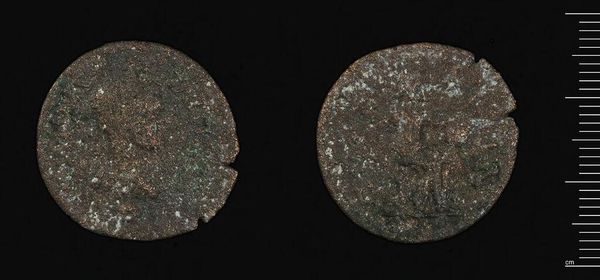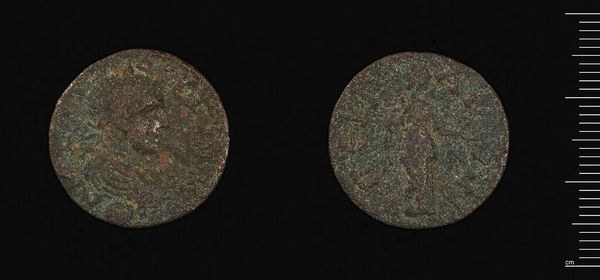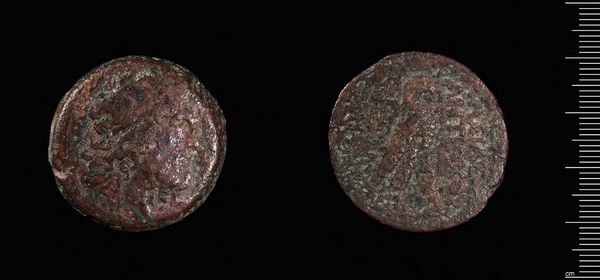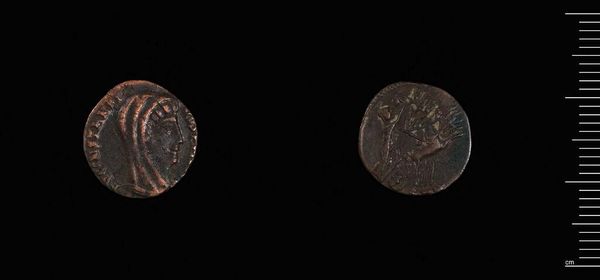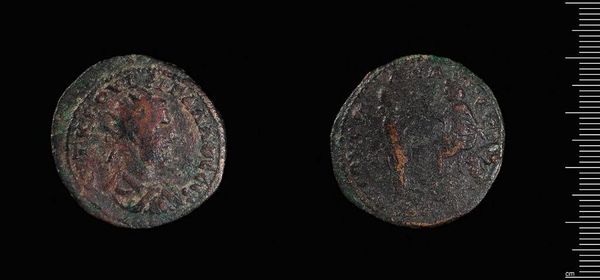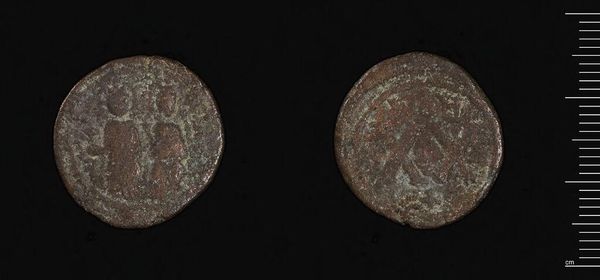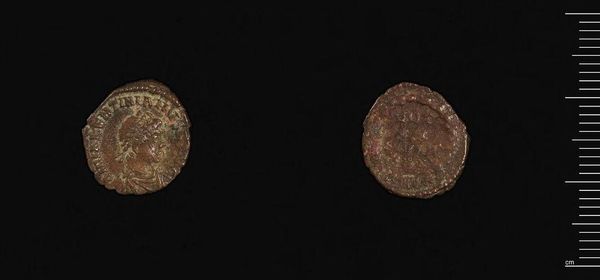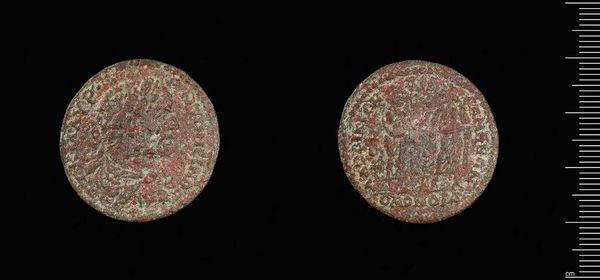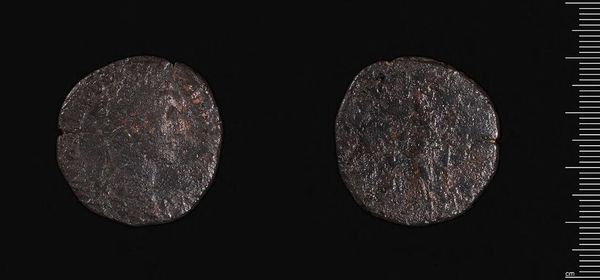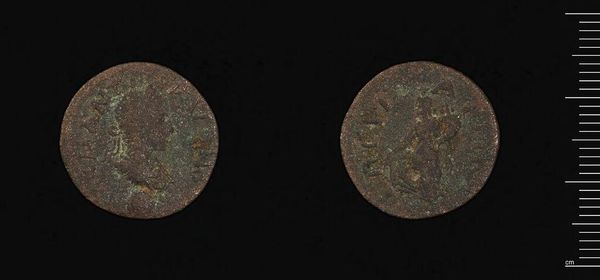
Dimensions: 19.45 g
Copyright: CC0 1.0
Curator: Before us, we have a Coin of Tarsus under Trebonianus Gallus, held in the Harvard Art Museums collection. It's a small artifact, weighing just under 20 grams. Editor: Its worn surface speaks volumes; it feels like holding time itself. The reddish-brown patina suggests a story etched through labor, trade, and daily exchange. Curator: Absolutely. Consider Tarsus, a vital center for commerce and philosophy. Minting coins under rulers like Gallus wasn't just economic; it was a potent declaration of power and identity, both Roman and local. How did this co-mingling of identities shape the landscape? Editor: The coin's materiality connects us to the empire’s vast resource networks. Where did this metal come from, who mined it, and how were those laborers treated? The small object speaks to expansive, entangled histories. Curator: Indeed, and examining the images, we confront gender and power. Gallus’s portrait, surely idealized, becomes a site to deconstruct the era's vision of masculinity. Editor: Exactly, and thinking of its circulation, who held it? Was it an artisan buying materials, a soldier's wage? Curator: Analyzing it with contemporary eyes offers a view of power and representation, challenging us to reflect. Editor: The coin really makes you consider labor and materials and how they're all intertwined.
Comments
No comments
Be the first to comment and join the conversation on the ultimate creative platform.
